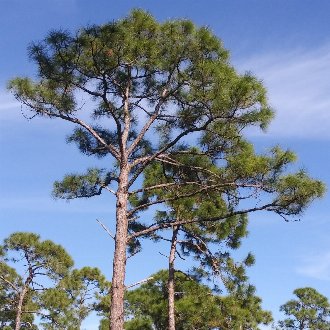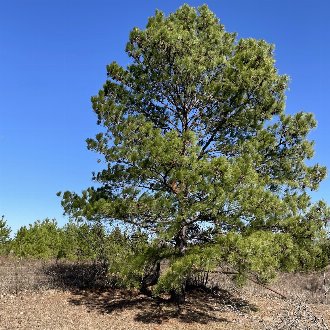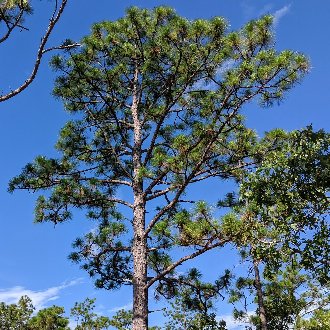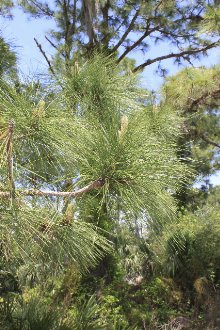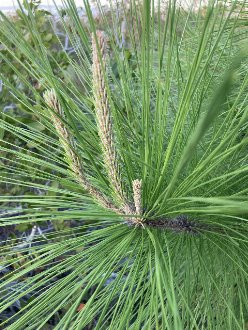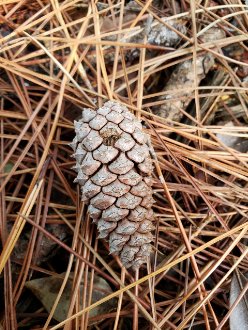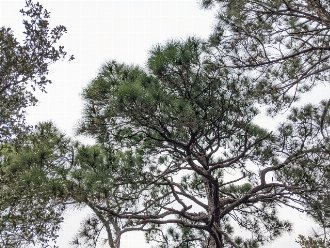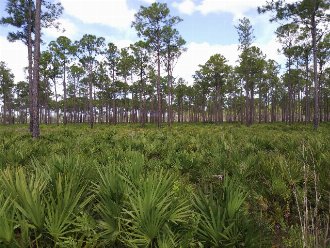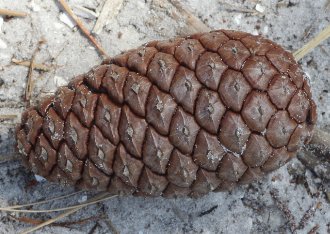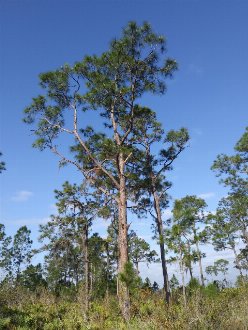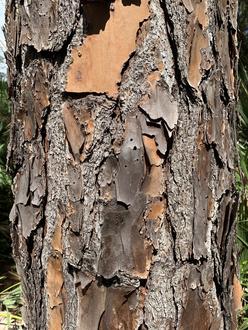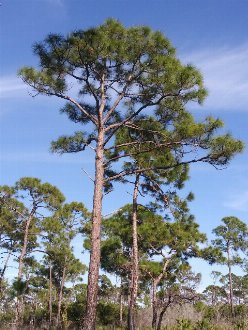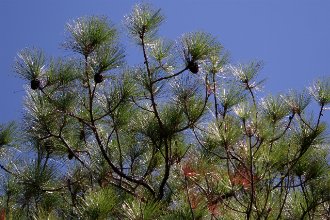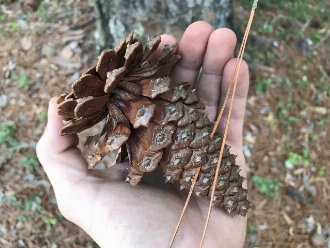Slash Pine (Pinus elliottii Engelm.)
↑Summary
A fast-growing, short-lived pine native to mesic flatwoods and moist, poorly-drained sites in the southeastern coastal plain.
↑Range - Expand
| Legend | Color |
| Native or Expanded | |
| Native or Not Present | |
| Native | |
| Expanded or Not Present |
This tentative map is based on our own research. It may have limited data on Canada and/or Mexico, and there is some subjectivity in our assignment of plants as introduced vs. expanded. Read more in this blog post.
Although this plant occurs somewhere in each of these regions, it may only occur in a small part of some or all of them.
↑Similar Plants
↑Habitat
Found mostly in mesic flatwoods of the southeastern coastal plain, also on stream and pond margines, generally on sites that have ample moisture and poor drainage. Can also be found on drier sites and limestone outcroppings, especially in the southernmost part of its range in Florida, and on sites sheltered from severe fire.
In flatwoods, slash pine is maintained by regular fire, but on drier sites, it is often excluded by more severe fires, which it is less tolerant of than longleaf pine (Pinus palustris).
Fire suppression has decreased the habitat for this species on moister sites, causing it to be replaced by hardwoods, but increased its ability to survive on drier sites, where it often replaces longleaf pine.
↑Life Cycle
Seeds germinate quickly, typically within 2 weeks of falling, and germinate on the surface of the ground. The germination rate is usually high, and is best on exposed mineral soil.
The root system establishes differently based on soil texture; all seedlings establish a taproot, but seedlings grow more lateral roots and more total length of roots on finer-textured soils, with the greatest growth on clay soils and the least on coarse sands.
In terms of aboveground growth, seedlings in optimal conditions can grow as much as 16 inches in their first year. In the southern portion of this range, however, seedlings have a "grass stage", much like longleaf pine, in which they persist for 2-6 years growing only a tuft of leaves and an extensive root system, but delaying upright growth. This life stage protects seedlings from fire and also provides some resistance to flooding. However, more northern populations are more vulnerable to fire and flooding when young.
Trees usually begin producing seed at around 10-15 years of age. It is around this age that trees also develop thick enough bark to survive all ground fires; some fire resistance to low-intensity ground fires begins developing within 3-4 years.
Trees self-prune as they age, which reduces the likelihood of fires reaching the crown.
Near or past the northern limit of its range, this species is frequently damaged or even killed by ice storms. Ice likely limits this species range expansion northward.
↑Uses
This species is valued for its wood; it is often lumped in with other "yellow pines", including longleaf, shortleaf, and loblolly pine. The wood is strong and heavy, especially relative to other pines, and is used in heavy construction. It is also used for plywood, wood pulp, and veneer. Its high resin content also makes it attractive for railroad ties, poles, and piling, and also for the production of gum turpentine and rosin. It has good workability but the high resin content causes it to clog tools and sandpaper.
Although most coal mining areas are north of this species range, it has been used to successfully revegetate coal mine spoils in northern Alabama.
↑Links & External Resources
• Slash Pine | The Wood Database (About This Site)
• Slash Pine | Fire Effects Information System (FEIS) (About This Site)
• Pinus elliottii (Slash Pine) | USDA PLANTS Database (About This Site)
• Slash Pine | iNaturalist (About This Site)
• Slash Pine | Virginia Tech Dendrology Factsheets (About This Site)
• Slash Pine | Silvics of North America (About This Site)
• Pinus elliottii | Biota of North America Project (BONAP) (About This Site)
• Pinus elliottii | NatureServe Explorer (About This Site)
• Pinus elliottii | Flora of North America (About This Site)



